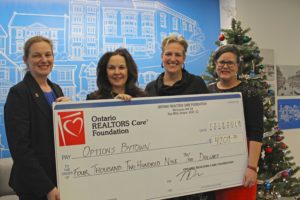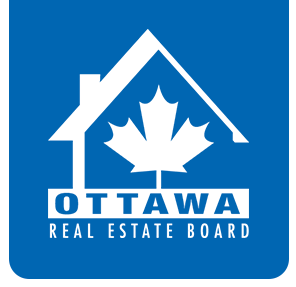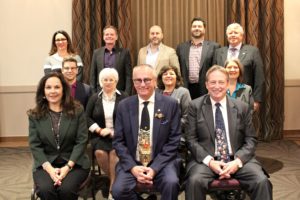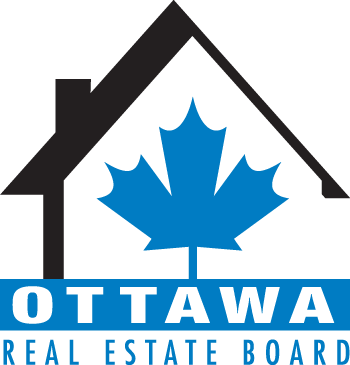Members of the Ottawa Real Estate Board (OREB) raised $92,180 for the Ontario REALTORS Care® Foundation this year and were able to provide grants to 25 shelter-related charities in the Ottawa-area. The funds were raised through the Board’s annual charity golf tournament, the “$2 per member per month” campaign, the RONA rebate program, as well as additional donations.
“These yearly grants are just one of the ways REALTORS® demonstrate how much they care about their communities. Many of our Members are dedicating their time and energy behind the scenes to the charities closest to their hearts,” acknowledges 2019 OREB President, Dwight Delahunt.
These charities assist local residents who may not have adequate shelter along with those who may be dealing with homelessness, addiction, mental or physical illness, spousal or familial abuse, physical disability, poverty, or ageing. The work these organizations do is essential for our community.
“Our REALTORS Care® Committee met with representatives from Ancoura, Maison D’Amitie, Options Bytown, and the Ottawa Carleton Association for Persons with Developmental Disabilities. These people make a difference in our communities, and I appreciate the opportunity to thank them for everything they do each and every day,” states Deborah Burgoyne, 2018 REALTORS Care® Committee Chair and 2019 OREB President-Elect.
The 2018 Ottawa-area grant recipients are:
Ancoura
Bruce House
Carleton Place and District Youth Centre
The Door Youth Centre
Eastern Ottawa Resource Centre
Habitat for Humanity
Harvest House
Hospice Care Ottawa
Jericho Road Christian Ministries
Lanark Highlands Youth Centre
Maison d’Amitié
Nelson House
Options Bytown
Ottawa Carleton Association for Persons with Developmental Disabilities
Ottawa Carleton Lifeskills
Ottawa Mission
Ottawa Network for Education
Ottawa Rotary Home Foundation
Roger Nielson House
Serenity Renewal for Families
Shepherds of Good Hope
St. Mary’s Home
St. Matthew’s Harmony House
YMCA/YWCA Youth Housing Program
Youth Services Bureau
The Ontario REALTORS Care® Foundation is operated by the Ontario Real Estate Association (OREA) and provides grants to Ontario shelter-related charities. The REALTORS Care® Foundation is supported by Ontario Real Estate boards and associations and their REALTOR® Members.









